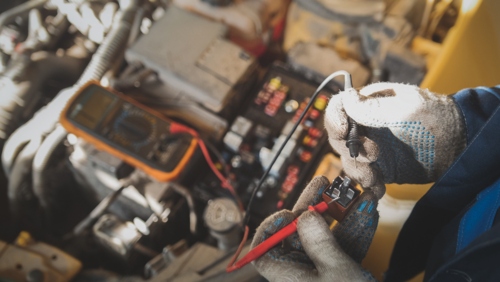Auto Electricians: Diagnosing Electrical Issues
In modern vehicles, electrical systems play a crucial role in ensuring optimal performance and safety. From powering the engine and lighting to managing complex infotainment systems, the electrical components are essential for a smooth driving experience. For auto electricians, diagnosing electrical issues is a vital skill that requires precision and expertise. This guide will explore the essential aspects of diagnosing electrical issues in vehicles, providing auto electricians with practical insights and techniques to effectively address and resolve these challenges.
Understanding Vehicle Electrical Systems
Before diving into diagnosis, it’s important to have a solid understanding of vehicle electrical systems. Modern cars are equipped with a network of electrical components, including the battery, alternator, starter motor, fuses, relays, and various sensors. These components work together to ensure the vehicle operates efficiently. Auto electricians must be familiar with how these systems interact and the common issues that can arise.
Key Components of Vehicle Electrical Systems
1. Battery: Provides the initial power needed to start the vehicle and powers electrical accessories when the engine is off.
2. Alternator: Charges the battery and supplies power to the electrical system while the engine is running.
3. Starter Motor: Engages the engine’s flywheel to start the engine.
4. Fuses and Relays: Protect circuits from overload and direct electrical current to specific components.
5. Sensors: Monitor various vehicle parameters and send data to the engine control unit (ECU).
Common Electrical Issues and Their Symptoms
Auto electricians must be able to identify symptoms of electrical issues accurately. Here are some common problems and their signs:
1. Battery Issues
Symptoms:
– Difficulty starting the vehicle
– Dim headlights
– Electrical accessories malfunctioning
Diagnosis:
– Check battery voltage with a multimeter
– Inspect battery terminals for corrosion
– Test the alternator’s charging voltage
2. Alternator Problems
Symptoms:
– Warning light on the dashboard
– Unusual noises from the engine bay
– Electrical systems flickering or failing
Diagnosis:
– Measure the voltage output from the alternator
– Check for loose or damaged alternator belts
– Test the alternator’s performance under load
3. Starter Motor Failures
Symptoms:
– Clicking noise when turning the key
– No response from the engine
– Intermittent starting issues
Diagnosis:
– Test the starter motor with a bypass switch
– Inspect wiring and connections to the starter
– Check the starter relay and fuse
4. Fuse and Relay Issues
Symptoms:
– Electrical components not working
– Blown fuses visible in the fuse box
– Inconsistent power supply to accessories
Diagnosis:
– Replace blown fuses and observe if the issue persists
– Test relays with a relay tester
– Inspect fuse box for damage or loose connections
Tools and Techniques for Electrical Diagnosis
Effective diagnosis of electrical issues requires the right tools and techniques. Here’s a look at essential equipment and methods:
1. Multimeter
A multimeter is a versatile tool used to measure voltage, current, and resistance. It’s crucial for diagnosing various electrical issues, such as checking battery voltage, testing alternator output, and verifying circuit continuity.

2. Oscilloscope
An oscilloscope helps analyze the waveform of electrical signals. It’s useful for diagnosing issues with sensors, signals, and more complex electrical systems where standard multimeter readings may not suffice.
3. Circuit Testers
Circuit testers are used to check for the presence of voltage in a circuit. They are handy for quickly identifying power and ground issues in electrical systems.
Best Practices for Diagnosing Electrical Problems
To ensure accurate and efficient diagnosis, auto electricians should follow these best practices:
1. Follow a Systematic Approach
Start by understanding the symptoms and isolating the problem to a specific area. Use a logical process to trace the issue from the symptoms back to the root cause. This approach helps in efficiently pinpointing the problem without unnecessary guesswork.
2. Use Wiring Diagrams
Wiring diagrams provide a visual representation of the vehicle’s electrical system. They are essential for understanding how different components are connected and how electrical current flows through the system.
3. Document Findings
Keep detailed records of the diagnosis process, including test results, component conditions, and any repairs made. Documentation helps in tracking recurring issues and provides valuable information for future reference.
Conclusion
Diagnosing electrical issues in vehicles requires a deep understanding of automotive electrical systems, the ability to recognize common symptoms, and proficiency with diagnostic tools and techniques. By following a systematic approach and utilizing the right equipment, auto electricians can effectively identify and resolve electrical problems, ensuring that vehicles operate reliably and safely. With experience and attention to detail, diagnosing electrical issues becomes a skill that enhances both the efficiency and effectiveness of auto repair services.


